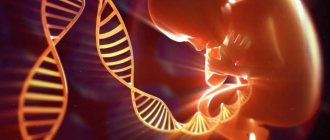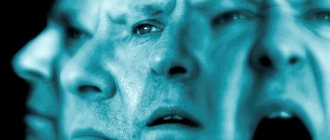Mental disorders
By 2021, diseases that are associated with mental disorders will appear in the top five diseases that lead to disability. This data is provided by the World Health Organization. According to recent studies, alarming symptoms worry every third resident of Russia.
Mental disorders occur for a number of reasons. These are external factors, heredity and genetic predisposition, although all the reasons are still not known to science.
Anything that disables the nervous system ultimately becomes the basis for the development of mental illnesses. Mental disorders occur for no apparent reason, and after stress, overwork, contact with toxic substances, consumption of alcohol and psychoactive substances.
Often, hereditary mental illnesses manifest themselves in childhood. Main symptoms:
- developmental delay
- excessive emotionality
- severe reactions to harsh remarks and adverse events
- inappropriate behavior
Other mental health problems become noticeable during adolescence. For example, signs of schizophrenia. Deviations that are associated with genetic predisposition also make themselves known early.
Mental illnesses are treatable. In our magazine, experienced psychiatrists and psychotherapists write about all the phenomena of psychiatry: about the clinical picture, diagnosis and methods that can return you to normal life. Who else to trust in such a serious matter if not competent and experienced doctors?
Doctors use clinical and laboratory methods to diagnose diseases. At the first stage, psychiatrists talk with the person and observe his behavior. There are laboratory and instrumental diagnostic methods - Neurotest and Neurophysiological test system.
Special medications can combat the disease. Experts prescribe antidepressants, tranquilizers, nootropics, and antipsychotics. Individual, group, family and gestalt therapy are also considered effective methods of rehabilitation.
Dietary supplements inexpensively
Modern life forces people to live in constant stress. Probably only a few today can say that they do not experience any out-of-the-ordinary mental states. Fears, anxiety, depression, sleep and eating disorders - all these are consequences of the frantic rhythm that modernity sets for humanity.
Thousands of people around the world live with mental disorders and illnesses without even knowing it. And there are those who are aware of the presence of a mental problem, but do not seek help from a psychiatrist, considering it humiliating or completely unnecessary.
Free consultation right now!
Online consultation with a specialist on your issue!
License number: LO-77-01-019036
Many mental illnesses are difficult to diagnose. Even experienced doctors sometimes cannot immediately understand what they are dealing with and insist on conducting additional research on a patient who has applied to the clinic for help.
Mental illnesses: list and description
Psychologists and psychiatrists identify the following groups and types of mental illnesses :
- Phobias (panic and stress states) are disorders that arise against the background of an exaggerated sense of fear. In these cases, the natural defensive reaction to danger becomes the dominant human response to any external stimuli.
- Depression . They manifest themselves as a loss of interest in life and a negative perception of it.
- Neuroses (hysteria, neurasthenia, obsessive states) occur with increased irritability and excitability of patients, imaginary somatic complaints, violent emotional reactions to life's difficulties and troubles.
- Mental retardation (in children) and mental retardation in all age groups. Such pathologies are characterized by a moderate or severe lag from normal indicators of thinking, perception, speech, behavioral or communication skills.
- Paranoid pathologies and schizophrenia are diseases that have specific symptoms. The hallmarks of paranoia include confusion and delusional thoughts. Schizophrenics try to isolate themselves from society; they are focused on themselves or some “super important” idea.
- Epilepsy is a disease that causes seizures and loss of consciousness.
- Affective pathologies . They manifest themselves as behavioral disturbances in response to ordinary external stimuli (reactions of anger, tearfulness, aggression).
- Psychoses . These conditions are associated with the development of mania (obsessive thoughts about persecution, sabotage, eavesdropping) or a combination of mania and a depressed state of mind (depressive thoughts about suicide, the presence of an incurable disease, the meaninglessness of existence).
Difficulty in identifying mental disorders
The difficulty in identifying mental disorders and diseases lies in the fact that:
- Mental disorders are multifaceted, and the same symptoms can indicate completely different diseases;
- Many mental disorders and diseases develop very slowly, making it almost impossible to diagnose them at an early stage;
- Mental disorders are often “masked” as symptoms of other diseases;
- Many patients, due to the lack of self-criticism and the ability to sensibly assess the existing situation, realizing that they have any mental problems, often hide this from others and doctors. This is one of the most common reasons for late diagnosis of mental disorders and diseases.
Write to WhatsApp
COST OF TREATMENT
Treatment of disorders
Therapy for mental disorders involves a number of activities:
- psychotherapy (individual and group classes), auto-training, neurolinguistic programming;
- course of medication, depending on the cause of the disease: sedatives (Valerian, Motherwort, Afobazole, Tenoten), tranquilizers (Hydroxyzine, Buspirone and analogues); neuroleptics (Propazina, Flupenthixol), antidepressants (Befola), nootropics (Mexidol, Pantogama), mood stabilizers (Valpromide, lithium salts);
- acupuncture, massage, narzan baths;
- giving up bad habits, avoiding stress, leading a healthy lifestyle.
OCD
Obsessive-compulsive disorder is one of the most diverse and difficult to understand. It involves the presence of obsessive thoughts or ideas (obsessions) and/or rituals (compulsions) that a person feels necessary to perform in order to prevent an unpleasant outcome or relieve emotional stress. Obsessions are involuntary, almost always unpleasant, and the person often tries unsuccessfully to resist them.
Obsessive thoughts or actions occur to one degree or another in most people. It becomes a disorder if they cause significant anxiety or take a long time.
The most common obsessive thoughts:
- fear of infection by germs, disease, as well as fear of so-called mental pollution;
- contrasting obsessions - thoughts that contradict a person’s value system: about the possibility of harming oneself or others, obscene and blasphemous thoughts and images, fear of doing something unacceptable;
- regular desire to double-check electrical appliances, taps, doors;
- discomfort in the absence of symmetry and the desire to achieve it; and others.
What therapy is used?
The main psychotherapies for OCD are exposure and response prevention and cognitive behavioral therapy. They are not mutually exclusive and, in moderate to severe cases, can be combined with medication. These methods have confirmed their effectiveness in treating OCD in numerous studies - it is about 70-75%.
How does it help? Using CBT methods, the patient learns to refute the incorrect assessment of his obsessive thoughts, argue with himself, and identify thinking errors. To cope with protective behavior (rituals), behavioral experiments are used, ultimately demonstrating to the patient the groundlessness of his fears.
How long does it last? As a rule, 10-12 sessions are needed to notice an improvement in OCD symptoms. A significant reduction in symptoms occurs after 15-20 sessions.
Treatment of psychopathy in men
Therapy is carried out using medications that are selected individually, taking into account the severity of symptoms and the severity of the disorder. As a rule, psychotropic drugs are prescribed. Preference is given to tranquilizers of the benzodiazepine group. If a depressed, depressive state predominates in the clinical picture, antidepressants are prescribed. Treatment is carried out over a long period of time with constant dose adjustment to reduce the risk of adverse reactions.
Psychotherapy is required, the main goal of which is the patient’s adaptation to society, correction of behavior and incorrect subconscious attitudes, and control of one’s own emotions. Sometimes group classes and art therapy provide good results.
The specialists at the Leto specialized clinic know very well how to treat psychopathy in men, and our doctors have extensive experience working with patients suffering from this illness. To schedule a consultation, call us at any time 8(969)060-93-93.
Causes of psychopathy in men
Until recently, experts were convinced that the main role in the etiology of the disease belongs to the hereditary factor. However, during long-term clinical studies this theory was not confirmed. Most likely, from an early age, children see an example of their parents’ behavior and subconsciously copy this manner of communication.
In addition, the causes of the disease may be:
- severe psychological trauma suffered at any age;
- damage to the central nervous system (neoplastic tumors in the brain, toxic or hepatic encephalopathy, acute or chronic hypoxia, consequences of stroke, etc.);
- long-term stressful situation associated with conflict in the family or at work, financial troubles, health problems, etc.
BAR
Bipolar affective disorder (BID) is a disorder in which manic (emotional, energetic, cheerful, but often irritable) and depressive episodes alternate. BAR has two forms. Type I includes one or more episodes of mania or major depression. In type II bipolar disorder, there are short episodes of hypomania (a milder form of mania), but depressive phases predominate. There is also cyclothymia - multiple cyclical mood swings in the form of hypomania and mild depression for at least two years of life.
What therapy is used? Medicines are the main, but not the only effective treatment for bipolar disorder: in the case of taking medications alone (these are mood stabilizers, antidepressants, and sometimes antipsychotics and tranquilizers), the relapse rate in the next two years is approximately 60%.
Some patients with bipolar disorder may have problems with adherence to medications and/or the effects of the disorder. This is where psychotherapy can make a difference. According to the American Psychological Association, the psychotherapy of choice for the treatment of bipolar disorder may include psychoeducation, CBT, interpersonal and social rhythm therapy, and family-focused therapy.
How does it help? Psychotherapy allows us to understand the mechanisms of the disease and the consequences of its impact on social life. Mood is stabilized, hospitalizations are reduced, and the patient gains cognitive and behavioral skills to manage symptoms. Thanks to this, the quality of life and relationships with other people improve.
How long does it last? A difficult question: bipolar disorder often occurs in parallel with other disorders, such as addictions, and this affects the duration of therapy. Most likely, with bipolar disorder, psychotherapy will be supportive in nature, that is, it will be long-term. Psychoeducation and normalization can take 10–15 sessions.
Why do men get sick more often?
Statistics have given a verdict: the stronger sex suffers from schizophrenic disorder more often than the weaker. The fact of primacy is associated with various factors: high hopes are placed on the stronger sex, more claims are made against it, and many expectations are associated with it.
A man in the eyes of society is a protector, a provider, a support. If the stronger sex is the head of the family, the responsibility for providing for the family falls on his shoulders. The modern world poses the financial question quite harshly. To earn money, a representative of the strong half of humanity has to work hard. Physical and mental stress is classified as chronic stress, which is an important factor in provoking the disease.
Fun fact: bachelors are 4 times more likely to suffer from the disorder than married people.
Another reason for the prevalence of the disease among the male population of the planet is considered to be physical injuries, in particular to the head. Its representatives are fond of traumatic sports: boxing, karate. Women drive cars more intensively, becoming involved in accidents. They serve in the army and take part in hostilities. Banal yard fights are more common among boys. All this becomes an excellent breeding ground for brain damage. And then - depending on your luck.
Among men, alcohol abuse is more common; drugs poison the brain, causing severe intoxication.
Patients are able to put forward their theories and ways to resolve the disease.
A schizophrenic man claims: one of the provoking factors of the disease is pride. From childhood, the guy was proud, and also a braggart. He did not recognize God, and when he began to come to the atheist in visions and call him to himself, he fell into magic. He imagined himself to be the messiah, the savior of humanity. After treatment there was relief. I started going to church and reading the Bible.
An interesting theory about genius personalities. In literature you can often find the statement of the legendary psychiatrist Cesare Lombroso: genius and madness go hand in hand. Or the words of the great Aristotle that genius inevitably presupposes madness. And indeed: among the male population there are much more hidden geniuses than among the female population, which explains the higher frequency of male schizophrenia.
Emotionally unstable psychopathy
The main external sign of the disease is impulsiveness in words and actions without taking into account possible consequences, lack of self-control. Any little thing can make a person angry; sometimes outbursts of aggression and irritability arise for no reason. Usually the disease manifests itself at a relatively early age, when the child is first forced to comply with certain requirements. Gradually, the pathology progresses up to episodes of twilight stupefaction for no apparent reason.
History of mental illness
The history of mental illness and its treatment contains a huge number of both great achievements and simply terrible cases of the use of methods that do not cure people, but turn them into walking vegetables. Consider electroshock therapy, which was used to “treat” almost all mental illnesses. Naturally, this did not lead to anything good, but only created a terrible reputation for psychiatric clinics.
It is worth noting that over time, most of the barbaric methods of “healing” have fallen into oblivion. Some are still used now, but very selectively and only in extreme cases, such as electroshock therapy, lobotomy or isolation. Increasing attention is being paid to the handling and care of patients. Gradually, this changes the opinion about psychiatry from negative to neutral, and sometimes even to positive.
The first mention of mental illness dates back to the fifth millennium BC. For their treatment, craniotomy was used, which is confirmed by the corresponding images.
The culture of the ancient world believed that any mental illness was a consequence of the influence of supernatural forces. These included:
- evil eye;
- witchcraft;
- damage;
- demonic possession.
Most often, such diseases were treated in only one way - by making a hole in the skull, i.e. trepanation. It was believed that in this way evil spirits were able to get out of the human body through this hole, and the patient was completely cured of his illness.
However, some ancient cultures, such as the Persian and Egyptian, although they considered mental illnesses to be associated with the influence of evil forces, tried to cure them in completely different ways, such as:
- personal hygiene;
- participation in recreational activities;
- setting up for positive emotions.
The greatest progress in understanding mental disorders was made by the ancient Greeks, in particular Hippocrates. He was one of the first to discover that mental disorders are associated with natural phenomena in the human body. He immediately dismissed all superstitious prejudices and focused on the medical aspect of these phenomena. It was the Greeks who were the first to use bloodletting, phlebotomy and cleansing the body with the help of specially formulated diets.
Despite all this, most cultures still preferred to hide the presence of mentally ill people in the family. They were either locked at home or thrown out onto the street. If this person was considered violent or dangerous, then he was placed in prison or a dungeon, where he remained for the rest of his life.
Beginning in the 15th century, mentally ill people were placed in insane asylums, workhouses, and mental asylums. Is it worth talking about the terrible conditions in these institutions? Their staff had not received any training in dealing with people with mental health problems. Therefore, patients were subjected to violence and all kinds of humiliation, such as:
- restriction of freedom of movement;
- straitjackets;
- bloodletting;
- burning;
- enemas;
- dousing patients with ice or boiling water.
All this was done as part of shock therapy. In some institutions, the rooms where patients were kept were not even cleaned, and they were not allowed out. You can imagine the sanitary and hygienic conditions there.
The exception to all this were shelters that opened at religious institutions. There they were treated much softer and more attentively. A similar attitude towards the mentally ill was observed until the 19th century, when representatives of the “Humanitarian Movement” finally achieved the opening of a state psychiatric clinic. This radically changed the attitude towards patients. Over time, more effective methods of treating most psychiatric disorders have been developed, including the use of various medications, which are an order of magnitude more humane than previously used methods.
Alcohol and drug addiction
Alcohol and drugs are powerful antidepressants and tranquilizers. Initially, these addictions are not so much a disease as ways to relieve stress, lift your spirits and fill an inner emptiness. But the underlying reason may lie elsewhere.
Photo: istockphoto.com
It is worth distinguishing between “domestic drunkenness” and “alcoholism”. The first is called the method of relaxation and stress relief. There's nothing critical about having a glass of wine with dinner or a glass of beer on a Friday night. In this case, only mental dependence on alcohol can form.
But alcoholism is an obsessive desire to turn off consciousness, when a person wants to get drunk and forget. At the same time, both physical and mental dependencies are formed: alcohol becomes an indispensable substance in the biochemical reactions of the body.
Mental disorders in children
Mental disorders in children under 10 years of age may be indicated by symptoms such as impaired attention and hyperreactivity, which manifests itself in the form of extreme mobility or fussiness. Starting from the very birth of a child, it is very important not to miss the moment of the onset of pathological deviations in his behavior.
The doctor is faced with the task of promptly and correctly dividing mental disorders due to improper pedagogical upbringing of parents or genetic predisposition. The initial signs of the disease in children include decreased appetite, which occurs repeatedly in the form of vomiting or complete refusal to eat.
Age limits
Mental disorder in the stronger sex starts much earlier than in the female. The first signs of schizophrenia in men can be traced back to childhood, at the age of 2-4 years. The behavior is noteworthy: motor activity, which is usually increased at this age, decreases. Boys neglect the company of their peers. They are looking for solitude.
The mood is usually labile. Kids are capricious and whine for no reason. Boys with developing schizophrenia are not inclined to show strong emotions and withdraw into themselves. During a conflict situation, they are unable to respond to an insult.
Such children are characterized by groundless fears. The emotions shown are often inappropriate. Acquired skills are lost.
Given the nonspecificity of symptoms, it is difficult to suspect a schizophrenic disorder. The child is accused of self-indulgence and blamed on age. Meanwhile, the disease continues to develop.
The manifestation of the disease in adolescence, up to 16 years, becomes common among males. Social isolation is typical when a teenager stops communicating with friends, avoids mass gatherings, and becomes indifferent to loved ones.
Guys are interested in mysticism: magic, esotericism, extrasensory perception. A sudden fascination with religion is a pretty telling sign.
Young men stop taking care of themselves, brushing their teeth and washing. Oddities appear in facial expressions and movements: twitching, harshness.
In teenage boys, symptoms are attributed to hormonal changes. Features: unsociability, inactivity, emotional instability.
It is believed that the favorable age for the development of male schizophrenia is 16-35 years, but the peak incidence occurs at 30 years. For comparison: for women, the onset of the disease is typical at 28-37 years of age.
General signs of schizophrenia in men, different from women:
- severe course, deep destruction of personality;
- characterized by a chronic course. Women are more prone to a sluggish and paroxysmal form;
- higher incidence due to increased brain vulnerability;
- brightness, severity of pathological changes, quickly leading to loss of ability to work.
What's next
Gradually, the sick male brain begins to draw its own picture of the world, to interpret what is happening in its own way.
The sufferer creates a new reality based on new sensations. Everything seems unreal to him; the feeling of altered consciousness, as if hypnotized, does not leave him. There is a hidden meaning, encrypted messages in everything. Walking down the street, a person witnesses a fight, and he becomes convinced that this performance was staged especially for him and carries hidden information. As the pathological process develops, the gradation of symptoms into positive and negative becomes more noticeable.
Negative symptoms of male schizophrenia include:
- isolation;
- avoidance of communication;
- emotionlessness;
- lack of will;
- apathy;
- neglect of personal hygiene.
Human behavior is changing more and more. Autistic traits are on the rise. A characteristic sign is loss of eye-to-eye contact.
Behavior is characterized by ambivalence, that is, duality: I want - I don’t want, I do - I don’t. A typical example. A schizophrenic comes to see a doctor. He extends his hand to say hello and abruptly pulls him away. Then he stretches it out again, withdraws it again, as if hesitating.
Problems in the cognitive sphere are growing sharply. Representatives of the stronger sex become absent-minded. Lost concentration. Perception and memory are impaired. Thinking is disorganized and illogical. As a result, the speech turns out to be difficult to understand, full of new words invented by the patient. Inferences are drawn incorrectly. A schizophrenic person thinks according to his own schemes, incomprehensible to others, which is why he seems absurd and insane to others.
It is worth noting that the basis of pathological thinking is not so much a violation of intelligence as a different perception of reality. A different picture of reality in the inner world of the male self, caused by changes in the psyche.
A number of psychiatrists believe: the later the disorder debuts, the more intact the intellect remains. Such individuals turn into real geniuses of science and art. They make incredible discoveries and become engines of progress. Scientists believe: such schizophrenics are simply a treasure for society and provide invaluable benefits. The mental abilities of schizophrenic geniuses are much higher than those of healthy non-geniuses.
There is a complete modification of one's own self. Sometimes people with schizophrenia themselves talk about themselves in the third person. The male personality is split into two. It’s as if two opposite people coexist in it: one does, the other criticizes. Gradually, there is a complete disintegration of the personality, in which it is already difficult to see the former one.
Unusual sensations in the body constantly accompany the patient. Complaints of headaches similar to migraines or brain tumors are typical. Headaches have a non-standard interpretation.
A man with schizophrenia claimed that his brain was increasing in size, swelling, filling all the space in the skull, pressing on the bones. The pressure is so great that your head is about to explode. The brain is so swollen that it hangs over the eyes, presses on the brow ridges, the eyelids - they protrude outward, the eyes will soon fly out of their sockets.
This syndrome even received a separate name: brain swelling.
Color perception also changes in schizophrenic disorder. Men are more likely to have a weakened reaction to color factors. Preference is given to a calm, muted palette, in contrast to women who prefer bright colors.
The color choice often depends on the form of the disease and the prevailing symptoms. For example, with the paranoid form, men gravitate toward blue and yellow colors. For depression, gray tones are chosen. The colors red and black have a stimulating effect on schizophrenics.








